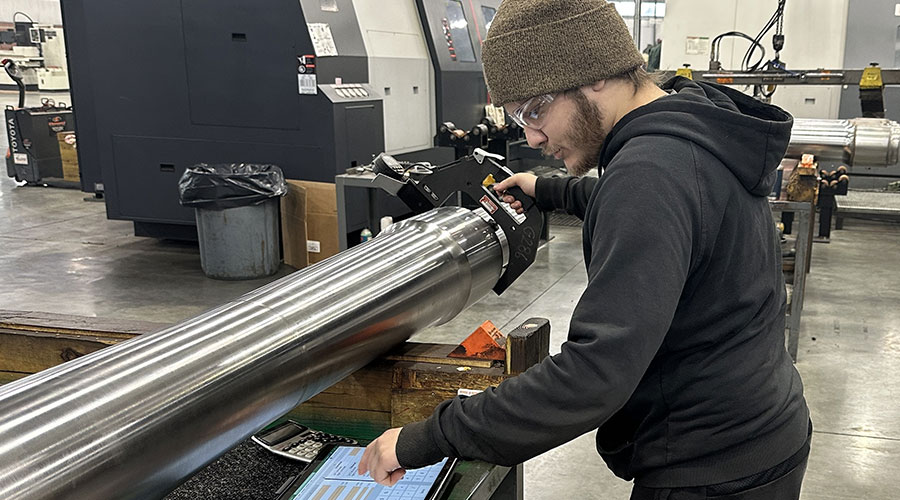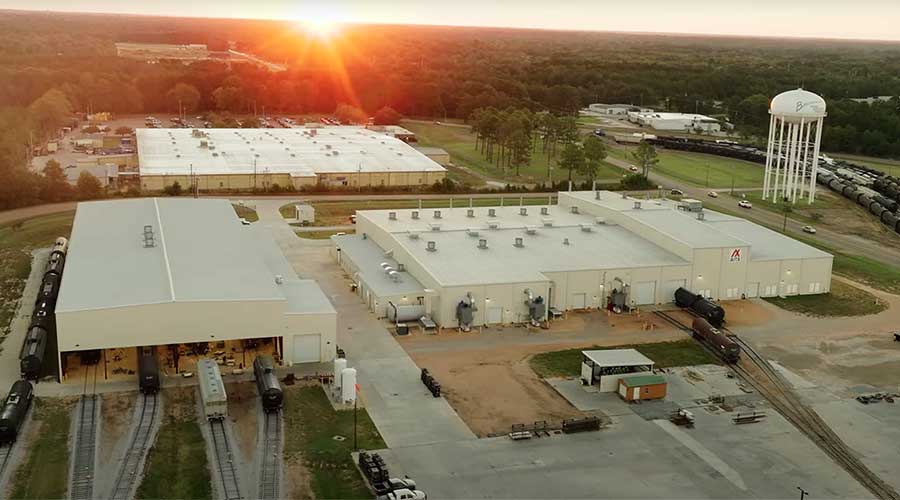Stay updated on news, articles and information for the rail industry
May 2013
Rail News: Mechanical
Tank car boom masks dearth of orders for other rail cars — analysis by Toby Kolstad
— by Toby Kolstad
The current market for rail cars reminds me of the 1984 Wendy's TV commercial in which an elderly lady, portrayed by Clara Peller, asked a fast-food server, "Where's the beef?" While her friends marveled over the large size of the bun, Clara looked at the small hamburger patty and asked the famous question. The excitement over the boom in tank cars for the petroleum industry reminds me of that huge bun. It has driven up the stock prices for both railroads and rail-car builders, but masked the fact that for most other car types, the recession hasn't ended.
Carload traffic is still well below 2007 levels. The size of the backlog of new tank cars also seems to be blinding many to the real question of the day: Have too many tank cars been ordered? By the end of 2014, railroads should be able to originate more than 2 million barrels per day (BPD) of crude oil, compared with about 600,000 BPD at the end of 2012. Will that many cars really be needed? Is another surplus fleet being built?
Surpluses And Traffic Surges
For several years, fleet managers have been contending with surpluses for box cars and most kinds of covered hopper, flat and coal cars. Although the number of surplus cars has been reduced significantly in recent years, the main reason for the decline has been the above-average number of retirements since 2008: box cars (60,000), covered hopper cars (100,000), flat cars (18,000) and coal cars (62,000). Although traffic levels are still below those of 2007, they have increased a little. With the retirements, supply and demand of rail cars for most fleets (excluding coal and lumber) is approaching parity. If traffic is expected to increase, where are the orders for new cars?
Statistically Inconsistent
The only fleet other than tank cars that has had any real order activity in recent months is multilevel flat cars used to transport automobiles. But fleet and traffic statistics do not seem to support the demand for new cars.
Although traffic growth has been measured in double digits since 2010, total annual carloads are still 20 percent below pre-recession peaks. Moreover, only 10 percent of the 2008 fleet appears to have been retired, leaving many cars still parked in storage.
We speculated in December 2012 that the North American fleet's poor physical condition may be prompting fleet managers to order cars ahead of demand, since they can't rely on the serviceability of the stored equipment. Whatever the reason, autorack demand accounts for 30 percent of the non-tank car backlog.
Inconsistencies in traffic and fleet statistics are not limited to autoracks. U.S. intermodal traffic is at record levels, with 2013 weekly loadings well above the record-setting 2012 counts. In Canada and Mexico, intermodal traffic gains have been even more spectacular, with each registering double-digit annual gains the past two years.
Although there have been new 53-foot well cars ordered since 2008 — about 40,000 new platform slots to handle the growth in domestic traffic — there also have been retirements of 89-foot flat cars and old spine cars.
The fleet utilization rate (loads per car per year) appears to be about what it was in 2007, and although that year's rate was below the records set during the few prior years when intermodal traffic was growing faster than railroads could handle it, no one was talking about surplus cars.
Train speeds, which affect utilization rates of active cars, do not appear to have changed enough to dampen demand.
So: Where are the orders for new intermodal cars? Will the intermodal fleet be sufficient to handle the seasonal rise in trailer and container loadings this summer and fall?
A Post-Peller-Like Pattern?
After the Clara Peller commercial, fast-food operators made much bigger hamburgers; most franchises now advertise how many ounces their patties weigh. Hopefully, the same pattern will be repeated in the rail-car industry, with orders for all car types increasing and production becoming more broadly based instead of being so dependent on the tank cars the petroleum industry needs. For now, all we can ask is, "Where's the beef?"
Keywords
Browse articles on tank car rail car freight car crude oil intermodal Toby KolstadContact Progressive Railroading editorial staff.


 LRW Honors Amtrak’s Acheson As Railway Woman Of The Year
LRW Honors Amtrak’s Acheson As Railway Woman Of The Year
 From Editor-In-Chief Foran: Of Gender Equity And Inclusion
From Editor-In-Chief Foran: Of Gender Equity And Inclusion
 Spotlight On Some Of Today’s Rail Safety Products
Spotlight On Some Of Today’s Rail Safety Products
 Women of Influence in Rail eBook
Women of Influence in Rail eBook
 railPrime
railPrime







